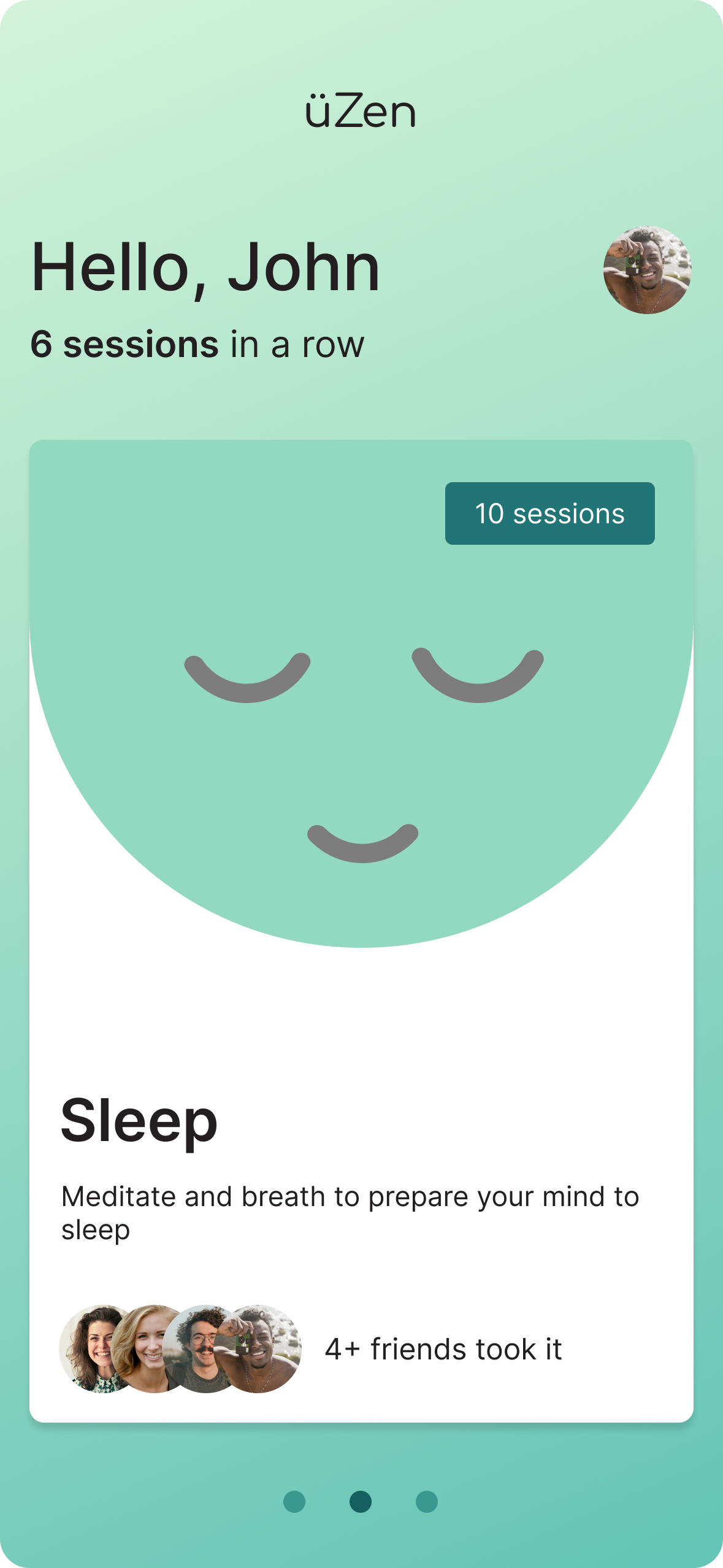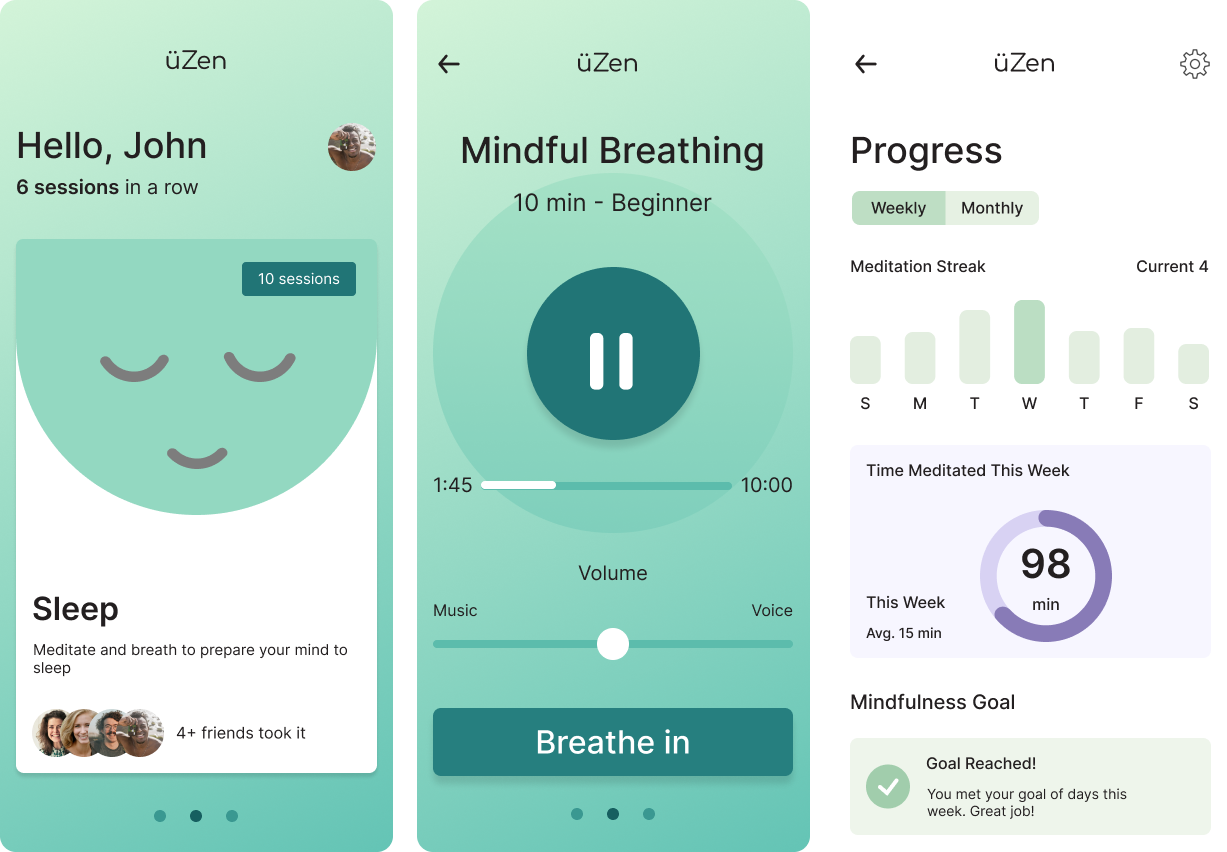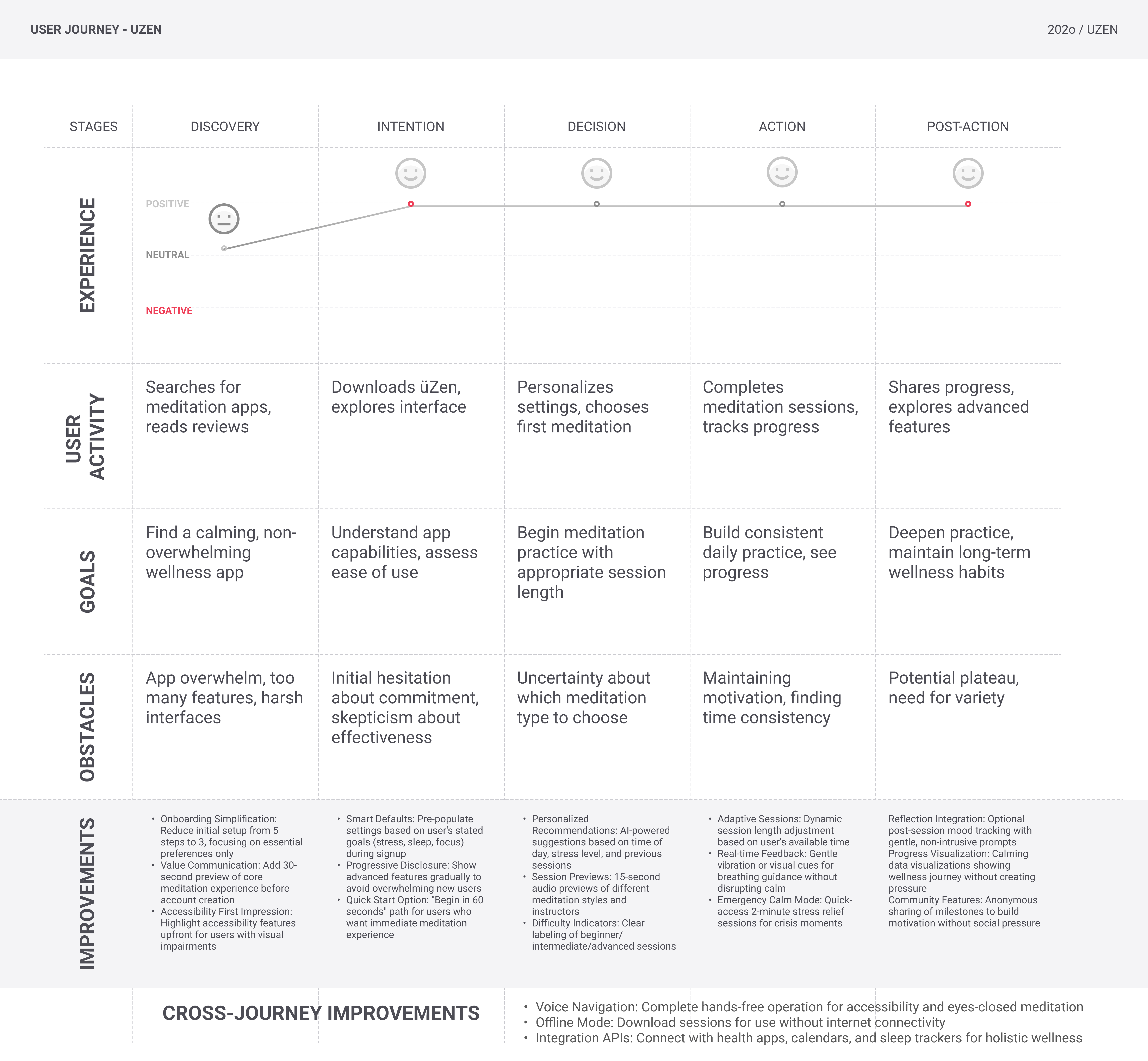WELLNESS & LIFESTYLE APPLICATIONS
Mindful design approach for wellness applications, focusing on calm, accessible interfaces that support user well-being and personal growth.
Project Overview
Designed and optimized wellness and mindfulness applications to create serene, intuitive, and highly accessible interfaces that gently guide users through their wellness journey. Like a peaceful garden, every element is carefully placed to cultivate tranquility while ensuring the experience remains accessible to all users.
The challenge was to balance calming aesthetics with functional design, ensuring that users could easily access wellness tools while maintaining the highest standards of accessibility and personalized experiences.
30%
Increase in Daily Meditation Sessions
25%
Improvement in Accessibility
20%
Increase in User Retention

üZen: Cultivating Calm with a Mindful Design Approach
üZen is a mindfulness and meditation application meticulously designed to help users find calm, reduce stress, and improve their overall well-being. My role involved leading the UX/UI design to create a serene, intuitive, and highly accessible interface that gently guides users through meditation practices and cultivates a profound sense of tranquility. The design emphasizes soft visuals, clear audio cues, and customizable features to support individual mindfulness journeys, making meditation accessible and engaging for everyone.
Color Palette
Soft Mint (#93D8C1)
A soothing teal that promotes a sense of peace and tranquility, used as the primary color for the meditation interface.
Pale Green (#D2F3D8)
A soft, reassuring blue that encourages relaxation and focus, used for interactive elements and progress indicators.
Deep Teal (#217576)
A gentle, warm coral used sparingly for motivational prompts and notifications to feel encouraging rather than alarming.
Key Achievements
Increased User Engagement:
Designed a calming and intuitive interface, leading to a 30% increase in daily meditation session completion rates.
Enhanced Accessibility:
Implemented adjustable font sizes and high-contrast options, improving usability for 25% of users with visual impairments.
Improved User Retention:
Personalized meditation paths and progress tracking features contributed to a 20% increase in user retention over three months.
Positive Emotional Response:
User feedback indicated a 40% improvement in perceived calm and stress reduction after using the redesigned interface.
Key Screens & Wellness Experiences



Design Process & Methodology
Wellness User Research
Conducted extensive research on meditation practices, stress patterns, and accessibility needs across diverse user groups seeking mental wellness support.
Mindful Information Architecture
Developed intuitive information architectures and user flows that prioritize calm navigation, gentle guidance, and seamless access to wellness tools.
Calming Visual Design
Focused on color psychology, typography, and visual hierarchy to create serene interfaces that encourage relaxation and mindful engagement.
Accessibility & Wellness Testing
Conducted extensive accessibility testing with diverse user groups, including those with anxiety and visual impairments, to validate wellness features and overall user experience.
Key Learnings & Impact
The Power of Design for Mental Health
Wellness interfaces require special consideration for users' emotional states, creating environments that feel safe, non-judgmental, and supportive of personal growth.
Accessibility in Wellness Design
Creating inclusive wellness experiences requires understanding how stress, anxiety, and various disabilities affect user interaction with digital interfaces.
Personalized Wellness Journeys
Effective wellness design adapts to individual needs, preferences, and progress, creating personalized experiences that grow with the user's wellness journey.
Ready to Transform Your Wellness Platform?
Let's collaborate to create mindful, accessible experiences that truly support user well-being and personal growth.